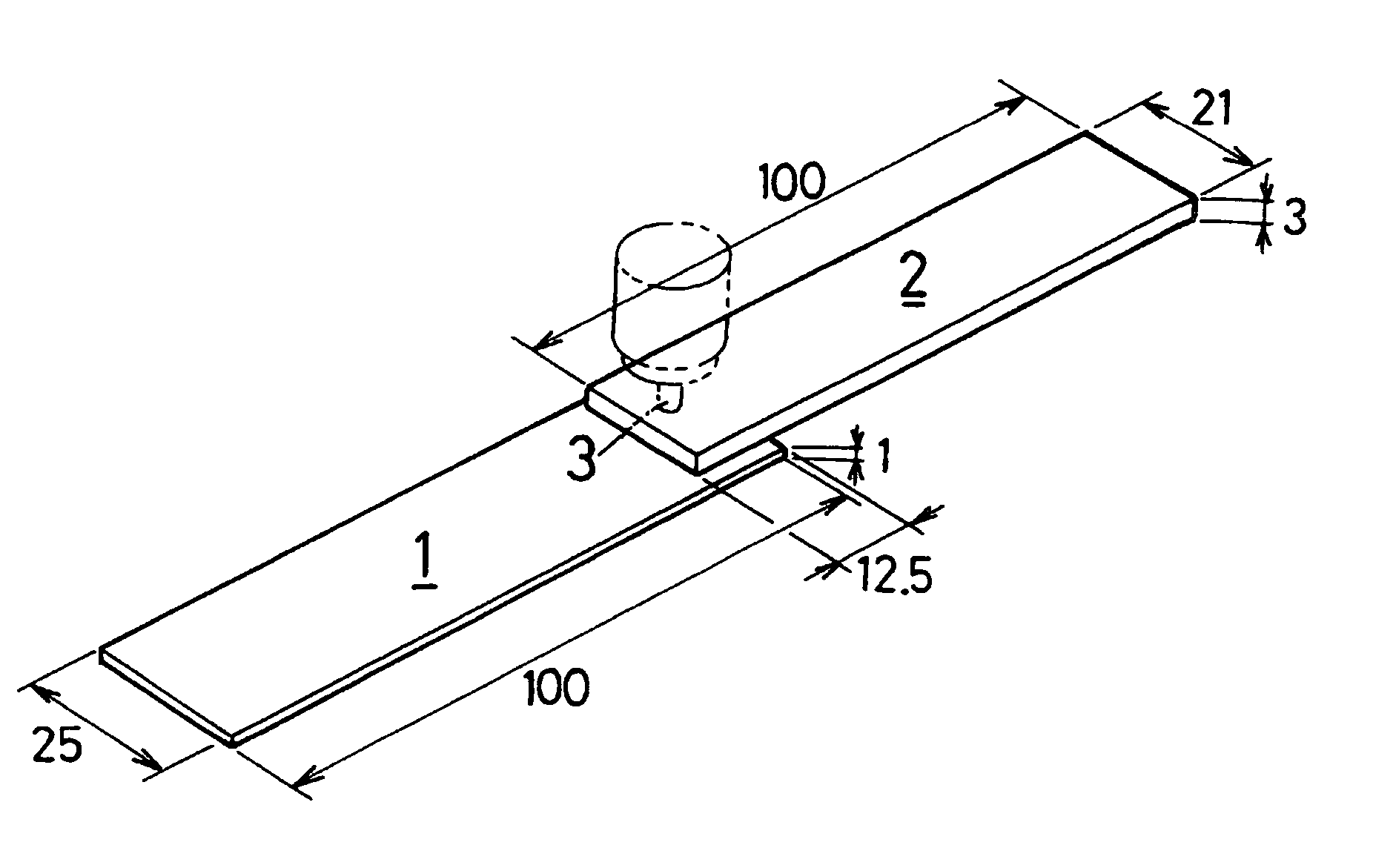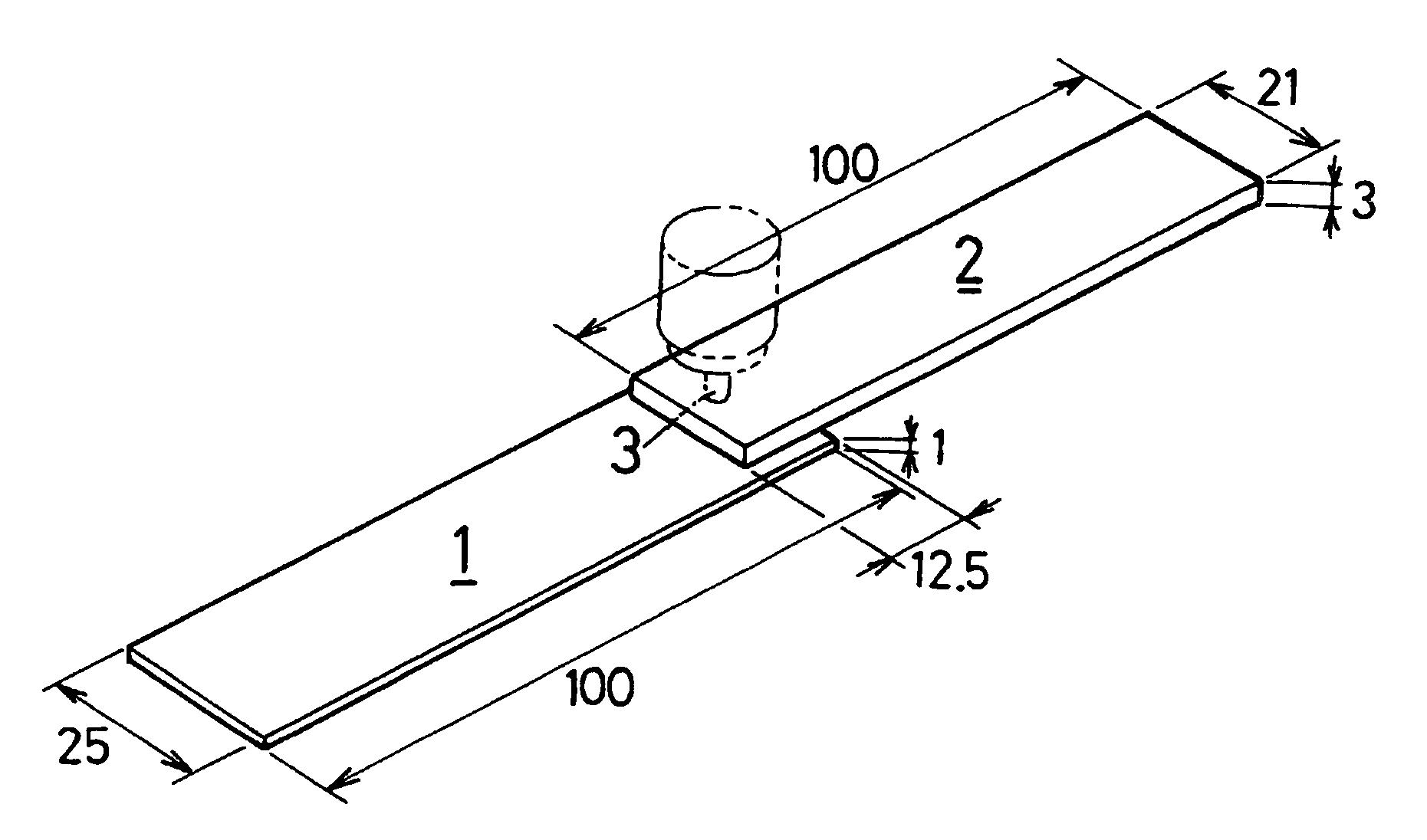Composite article of aluminum alloy with resin and method for production thereof
a technology of composite articles and aluminum alloys, applied in the field of composite articles of aluminum alloys with resins and methods for production, can solve the problems of unpractical method of integrating high-strength engineering resins with light metals such as magnesium, aluminum and alloys thereof, or iron alloys such as stainless steel without using adhesives, and achieve the effect of reducing the weight of electronic devices
- Summary
- Abstract
- Description
- Claims
- Application Information
AI Technical Summary
Benefits of technology
Problems solved by technology
Method used
Image
Examples
experimental example 1
[0047]A commercially available aluminum alloy plate A5052 with a thickness of 1 mm was purchased. The aluminum alloy plate was cut into 10 rectangular pieces of 100 mm by 25 mm. The aluminum alloy pieces were stuck to a rubber sheet with a double-sided adhesive tape, and this was put in a sandblast apparatus (not shown). The aluminum alloy pieces were subjected to an air blast treatment with the air pulse duration set so that the stock removal was at a level of about 5 μm. Then, the aluminum alloy pieces were taken out of the sandblast apparatus and allowed to stand for within 5 hours on the average under ordinary temperature and ordinary pressure conditions. Thereafter, the aluminum alloy pieces were dipped for 10 minutes in 1 liter of acetone while being subjected to ultrasonic waves, followed by washing with tap water.
[0048]Next, 2 liters of hydrochloric acid diluted with ion-exchanged water to a concentration of 1% was put into a large-sized beaker kept at 40° C. The above-descr...
experimental example 2
[0051]A commercially available aluminum alloy plate A110 (Japanese Industrial Standards (JIS)) with a thickness of 1 mm was purchased. The aluminum alloy plate was cut into 10 rectangular pieces of 100 mm by 25 mm. The aluminum alloy pieces were treated by almost the same method as in Experimental Example 1. This Example differs from Experimental Example 1 only in that a 25% ammonia aqueous solution was used in place of the hydrazine aqueous solution, and that the temperature during the treatment was 25° C., and further that the dipping time was 30 minutes. The treated aluminum alloy pieces were put in a storage box filled with dry air.
[0052]After three days, the aluminum alloy pieces were taken out of the storage box and each inserted into an injection mold by being picked up with a gloved hand so that oil or other contaminant would not be attached thereto. Thereafter, molding was carried out in the same way as in Experimental Example 1. Then, a tensile breaking test was performed ...
PUM
| Property | Measurement | Unit |
|---|---|---|
| temperature | aaaaa | aaaaa |
| diameter | aaaaa | aaaaa |
| temperature | aaaaa | aaaaa |
Abstract
Description
Claims
Application Information
 Login to View More
Login to View More - R&D
- Intellectual Property
- Life Sciences
- Materials
- Tech Scout
- Unparalleled Data Quality
- Higher Quality Content
- 60% Fewer Hallucinations
Browse by: Latest US Patents, China's latest patents, Technical Efficacy Thesaurus, Application Domain, Technology Topic, Popular Technical Reports.
© 2025 PatSnap. All rights reserved.Legal|Privacy policy|Modern Slavery Act Transparency Statement|Sitemap|About US| Contact US: help@patsnap.com


